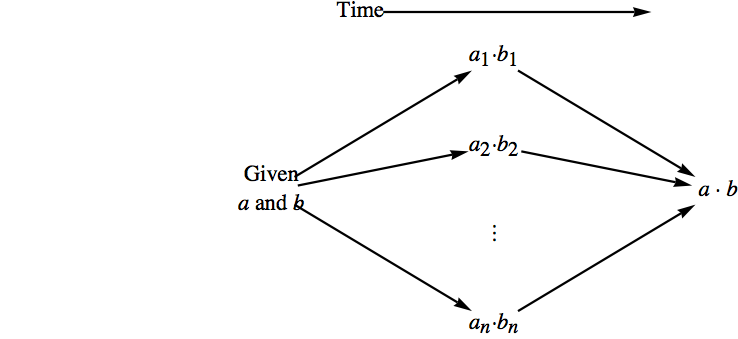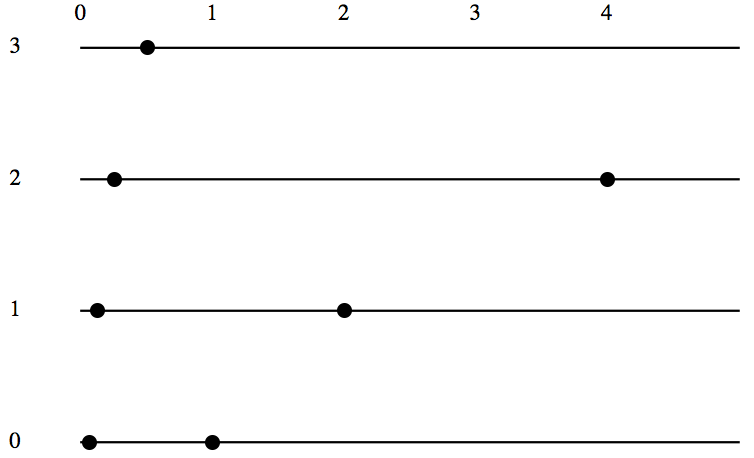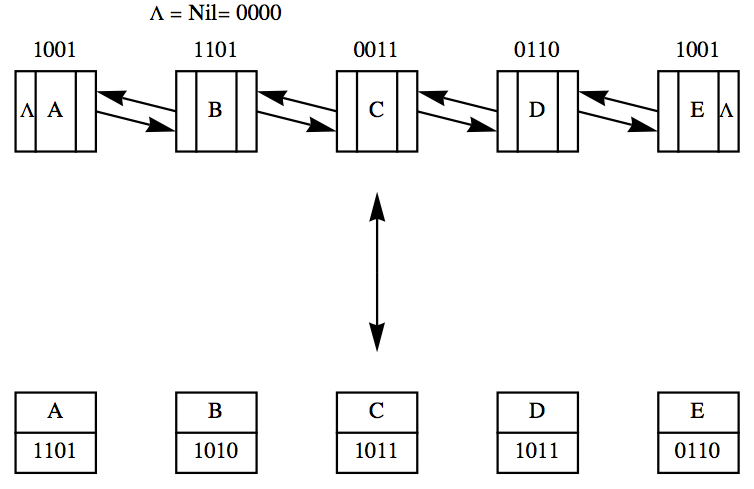Definition 11.6.1. Direct Product.
If \(\left[V_i;*_i, \diamond_i, \ldots \right]\text{,}\) \(i = 1, 2, \ldots, n\) are algebraic systems of the same kind, then the direct product of these systems is \(V =V_1\times
V_2\times \cdots \times V_n\) , with operations defined below. The elements of \(V\) are \(n\)-tuples of the form \(\left(a_1, a_2, \dots , a _n \right)\text{,}\) where \(a_k \in V_k\text{,}\) \(k = 1, \dots , n\text{.}\) The systems \(V_1\text{,}\) \(V_2, \dots, V_n\) are called the factors of \(V\text{.}\) There are as many operations on \(V\) as there are in the factors. Each of these operations is defined componentwise:
If \(\left(a_1, a_2, . . . , a _n \right), \left(b_1,b_2, . . . , b _n \right)\in V\text{,}\)
\begin{equation*}
\begin{array}{c}
\left(a_1, a_2, \dots , a_n \right) * \left(b_1, b_2, \dots , b_n \right) = \left(a_1 *_1 b_1, a_2 *_2 b_2,\ldots , a_n *_n b_n \right)\\
\left(a_1, a_2, \dots , a_n \right) \diamond \left(b_1, b_2, \dots , b_n \right) = \left(a_1 \diamond_1 b_1, a_2 \diamond_2 b_2,\dots , a_n \diamond_n b_n\right)\\
\textrm{etc.}\\
\\
\end{array}
\end{equation*}




